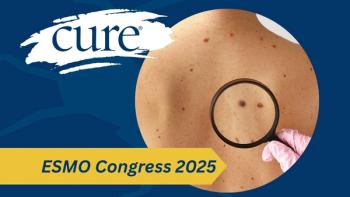
laBCC Overview
Anna C. Pavlick, D.O., provides an overview of locally advanced basal cell carcinoma (laBCC) that includes the different risk factors and clinical presentations.
Anna C. Pavlick, D.O.: When it comes to skin cancer, there are essentially 3 types that we talk to patients about. The most common is basal cell carcinoma, the next is squamous cell carcinoma, and the next is melanoma.
Basal cell carcinomas are usually slow-growing skin cancers that are a consequence of long-term sun exposure. They can present as scaly lesions that occur most commonly in older patients, predominantly on their head and neck areas. They are most often managed with an excision or something called a Mohs surgery, which is done by a Mohs micrographic surgeon, who’s a very well trained, skilled dermatologist specializing in Mohs surgery. Basal cells are the most common. Ninety percent of them are managed with a local excision or a simple surgery. However, there are a small percentage of these basal cell carcinomas that can spread locally that can be in areas that are very difficult to resect, such as a basal cell carcinoma that occurs on the inside part of your eye, your eyelid, your upper lip, or on the outside aspect of your nose. It’s not to say that these are not resectable because when they’re small, they’re resectable. However, if they continue to grow and invade—sometimes they can invade cartilage—they can be resected but do require some extensive reconstruction.
Often, there’s a multidisciplinary team of doctors that will gather to decide how best to manage this locally advanced basal cell carcinoma for a particular patient. It really is an individualistic decision that we as physicians make, based on a patient’s age and the location of the tumor. Is this a newly diagnosed tumor? Is this a tumor that has already recurred? How well is that patient? What can you do to best benefit that patient based on their age or based on their medical issues? We look at all those factors and then make recommendations for treatment.
Basal cell carcinomas do occur because of excessive sun exposure or UV [ultraviolet] exposure. We see a high predominance of squamous cell as well as basal cell carcinomas that occur in people who do a lot of outdoor activities—predominantly golfers, bicycle riders and runners who are outside and who may not always think to use sun protection like sunscreen 365 days a year. This damage to the DNA that occurs in the skin takes years to develop and culminate, so many times patients with basal cell carcinomas are patients who are over age 50. It’s because of the damage we do to our skin when we’re young and we don’t think about putting on sunscreen when we’re outdoors. It really lets itself be known as we age.
The other population of people who are more prone to skin cancers—predominantly basal cell—are farmers and construction workers—people whose daily employment requires them to be outside and who may not think about putting on sunscreen 365 days a year for their entire life. Those are the patients who are going to be more at risk, and we know that these are lesions that commonly occur on the head and neck. They can happen on the upper curvature of the ear. They happen commonly on the tip or the lateral side of the nose and on the chin. For older gentlemen, many of them may not have a full head of hair, and they don’t think about putting sunscreen on their head; they can also occur very commonly on the scalp.
Transcript edited for clarity.





